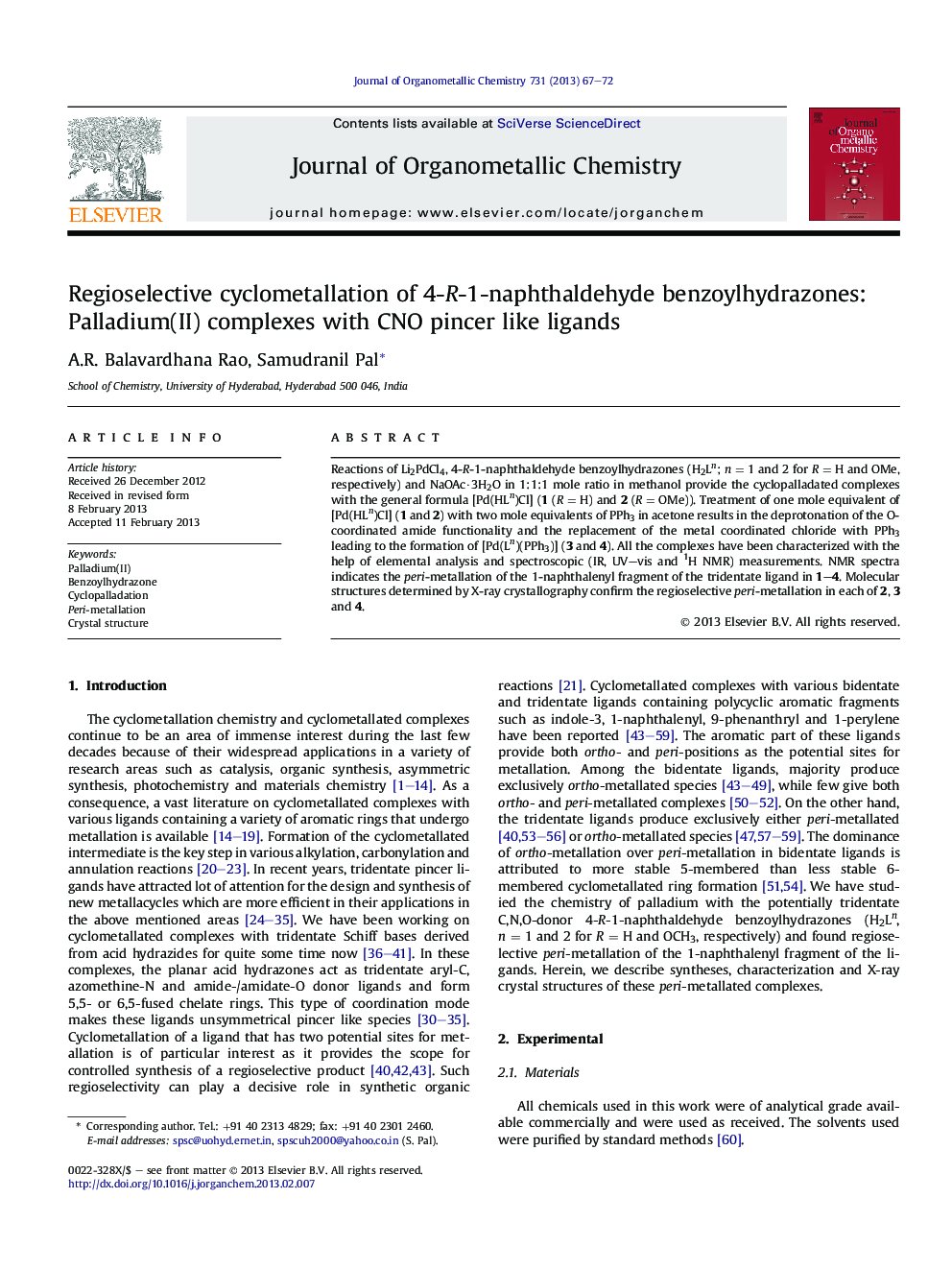| Article ID | Journal | Published Year | Pages | File Type |
|---|---|---|---|---|
| 1321877 | Journal of Organometallic Chemistry | 2013 | 6 Pages |
Reactions of Li2PdCl4, 4-R-1-naphthaldehyde benzoylhydrazones (H2Ln; n = 1 and 2 for R = H and OMe, respectively) and NaOAc·3H2O in 1:1:1 mole ratio in methanol provide the cyclopalladated complexes with the general formula [Pd(HLn)Cl] (1 (R = H) and 2 (R = OMe)). Treatment of one mole equivalent of [Pd(HLn)Cl] (1 and 2) with two mole equivalents of PPh3 in acetone results in the deprotonation of the O-coordinated amide functionality and the replacement of the metal coordinated chloride with PPh3 leading to the formation of [Pd(Ln)(PPh3)] (3 and 4). All the complexes have been characterized with the help of elemental analysis and spectroscopic (IR, UV–vis and 1H NMR) measurements. NMR spectra indicates the peri-metallation of the 1-naphthalenyl fragment of the tridentate ligand in 1–4. Molecular structures determined by X-ray crystallography confirm the regioselective peri-metallation in each of 2, 3 and 4.
Graphical abstractCyclopalladated complexes, [Pd(HLn)Cl] and [Pd(Ln)PPh3], with 4-R-1-naphthaldehyde benzoylhydrazones (H2Ln, R = H and OMe) are reported. Spectroscopic and crystallographic studies reveal regioselective peri-metallation of the 1-naphthalenyl fragment of the tridentate ligands ((HLn)− and (Ln)2−) in these complexes.Figure optionsDownload full-size imageDownload as PowerPoint slideHighlights► Cyclopalladation of 4-R-1-naphthaldehyde benzoylhydrazones (H2Ln) was investigated. ► Reaction of Li2[PdCl4], H2Ln and sodium acetate provides [Pd(HLn)Cl]. ► Treatment of [Pd(HLn)Cl] with PPh3 produces [Pd(Ln)PPh3]. ► All the complexes were characterized by spectroscopy and X-ray crystallography. ► 1-Naphthalenyl moiety of the tridentate ligand in each species is peri-metallated.
